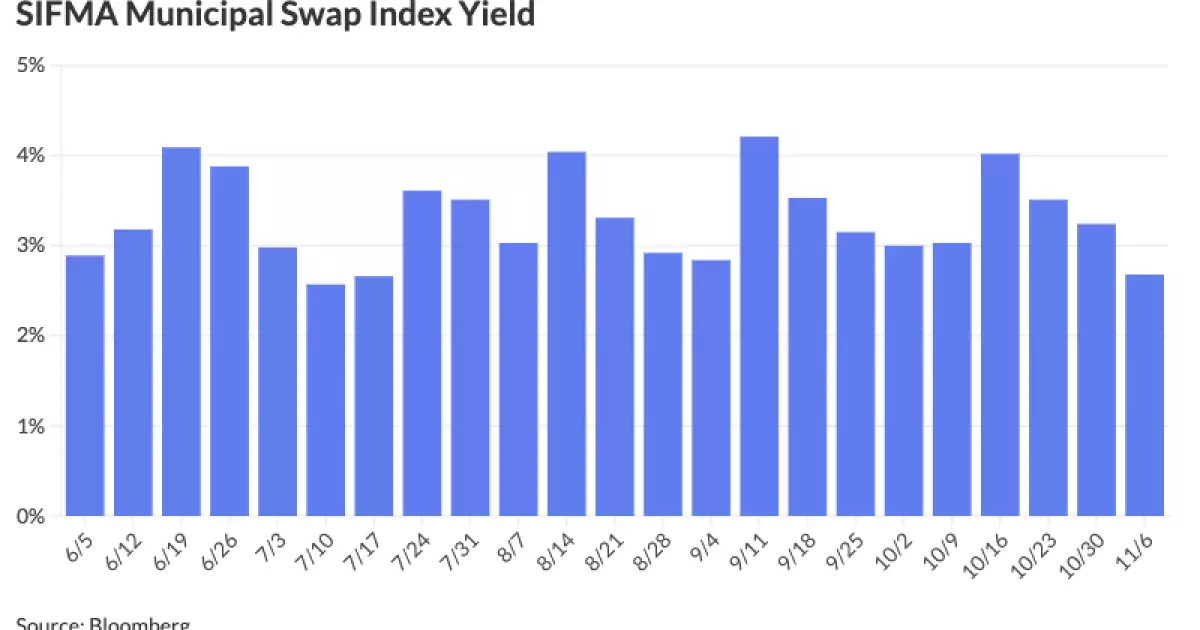As we approach the end of 2024, the landscape for money market funds — both taxable and tax-exempt — reveals a remarkable transformation driven by investor sentiment and changing economic indicators. Amidst growing fears surrounding potential election outcomes and the subsequent cuts to Federal Reserve interest rates, these funds have soared to unprecedented levels not seen since the onset of the year. Such adaptations highlight the defensive maneuvers that investors are making in response to the unpredictable nature of the current market.
Investment professionals, such as Kim Olsan, Senior Fixed Income Portfolio Manager at NewSquare Capital, emphasize that investors have consistently adopted a cautious approach over the past nine months while awaiting clarity on the Federal Reserve’s rate adjustments. Olsan pointed out that the promise of higher yields from short-term instruments has drawn considerable interest toward money market funds and short-dated bonds. As a result, this dynamic has elevated tax-exempt money market funds, which recently registered inflows of $3.2 billion according to the latest Money Fund Report from EPFR. This influx pushed total assets in these funds to an impressive $136.84 billion, a significant leap from earlier lows earlier this year.
Historically, significant fluctuations within money market fund balances correlate strongly with actions taken by the Federal Reserve. Eric Golden, CEO of Canopy Capital Group, indicated that prior to the COVID-19 pandemic, the total assets in taxable and tax-exempt money markets were estimated between $2 trillion and $3 trillion. However, the shock of the pandemic coupled with rapid interest rate hikes from the Fed has caused the assets in these funds to surpass $6.5 trillion.
This rate-driven shift underlines why short rates have become increasingly appealing and effectively reshaped the investment landscape. According to Olsan, the current inversion of the yield curve, which remains approximately 50 basis points between money market rates and ten-year yields, triggers questions about the sustainability of money market investments. Notably, the yields on tax-exempt money markets hover around 3.50%, contrasting sharply with about 3.00% for long-duration government bonds. The prolonged state of inversion adds layers of complexity for investors who must now navigate a volatile market environment.
Amid these transitions, analysts like Rick White, an independent consultant, observe a gradual accumulation of assets within money market funds. Following a tumultuous couple of years riddled with financial uncertainties, the current assets are being allocated not just to variable rate demand notes but diversified into instruments such as commercial paper and municipal notes. Despite this deployable capital, market volatility continues to pose challenges. White notes that inflows can dramatically fluctuate, significantly affecting positions held by money market funds.
Market reporting has shown that SIFMA Swap Indexes have recently dipped to 2.68%, down from prior peaks, suggesting that while investors remain cautious, some positive developments might stabilize the market further. There is a recognition amongst stakeholders that movement in interest rates, steered by the Fed’s decisions, are pivotal in determining where excess capital flows next.
Golden’s insights propose that future trends in funds’ flow will largely depend on the Federal Reserve’s speed in reducing rates. An intricate dance is unfolding, as any alterations in rate policies could compel investors to redirect their capital, making it crucial to monitor how yields react as economic conditions evolve. This behavior aligns with historical precedents, where funds siphoned away from money markets after the Fed signaled its intent to cut rates, often catching market participants off guard.
Given the complex relationship between interest rates and asset allocation, the overall sentiment remains that while some funds may seek refuge in equities or other asset classes, a notable shift towards bonds is anticipated. For high-income earners, investments in municipal products are particularly highlighted due to their tax-advantaged status. However, Olsan cautions against hastily pulling funds from money markets until more significant shifts in interest rates are observed, particularly for U.S. Treasuries.
To encapsulate this dynamic market, professionals articulate the necessity of a balanced approach in navigating money market funds. As market players await clearer signals of stability amid continual flux, the focus on yield and risk will undoubtedly shape future investment strategies. The path forward is fraught with uncertainty, but astute investors will need to remain agile and responsive to these pivotal changes in the market landscape.


Leave a Reply